Don't wanna be here? Send us removal request.
Text
Budget 2022-23 Opportunities!
Engineering Environment for Better Tomorrow
www.envirochems.com
#indiabudget #budget2022 #India #pmoindia #financeandeconomy #gatishakti #smartcity #sewerage #rivers #smartgrid #carbonneutral #smartwatermanagement #urbandesign #urbanplanning #indiabusiness

3 notes
·
View notes
Text
How Climate Change Showed Up in 2021
2021 was tied for the sixth-hottest year since modern record keeping began. We work together with the National Oceanic and Atmospheric Administration to track temperatures around the world and study how they change from year to year.

For decades, the overall global temperature has been increasing because of human activities. The last decade has been the warmest on record. Each individual year’s average temperature, however, can be affected by things like ocean circulation, volcanic eruptions, and specific weather events.
For instance, last year we saw the beginning of La Niña – a pattern of cooler waters in the Pacific – that was responsible for slightly cooling 2021’s average temperature. Still, last year continued a long-term trend of global warming.
Globally, Earth’s temperature in 2021 was nearly 2°F warmer than the late 19th Century, for the seventh year in a row.
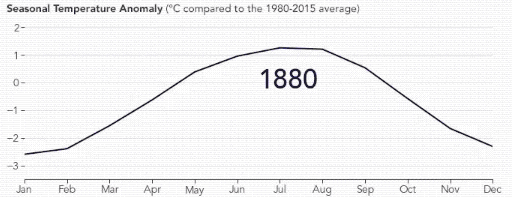
The Record
Studying 142 Years
Since 1880, we can put together a consistent record of temperatures around the planet and see that it was much colder in the late-19th century. Before 1880, uncertainties in tracking global temperatures are larger. Temperatures have increased even faster since the 1970s, the result of increasing greenhouse gases in the atmosphere.
Tracking Millions of Individual Observations
Our scientists use millions of individual observations of data from more than 20,000 weather stations and Antarctic research stations, together with ship- and buoy-based observations of sea surface temperatures, to track global temperatures.
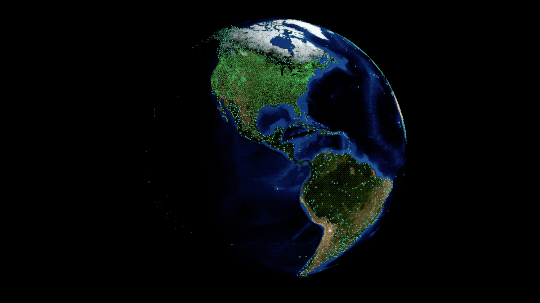
Reviewing Multiple Independent Records
Our global temperature record – GISTEMP – is one of a number of independent global temperature records, all of which show the same pattern of warming.

The Consequences
Everywhere Experiences Climate Change Differently
As Earth warms, temperature changes occur unevenly around the globe. The Arctic is currently warming about four times faster than the rest of the planet – a process called Arctic amplification. Similarly, urban areas tend to warm faster than rural areas, partly because building materials like asphalt, steel and concrete retain heat.
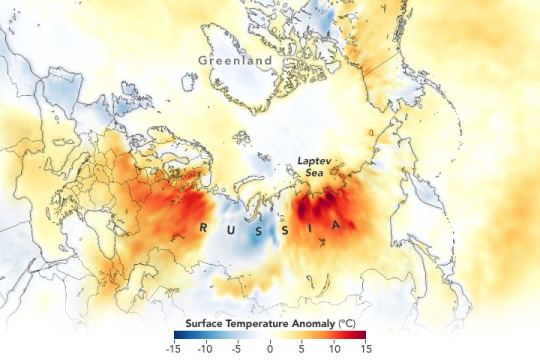
Droughts and Floods in Warmer Weather
More than 88% of the Western US experienced drought conditions in 2021. At the same time, communities in Western Europe saw two months’ worth of rain in 24 hours, breaking records and triggering flash floods. Because a hotter climate means more water can be carried in the atmosphere, areas like the Western US suffer drought from the increased 'thirstiness' of the atmosphere, while precipitation events can become more extreme as the amount of moisture in the atmosphere rises.
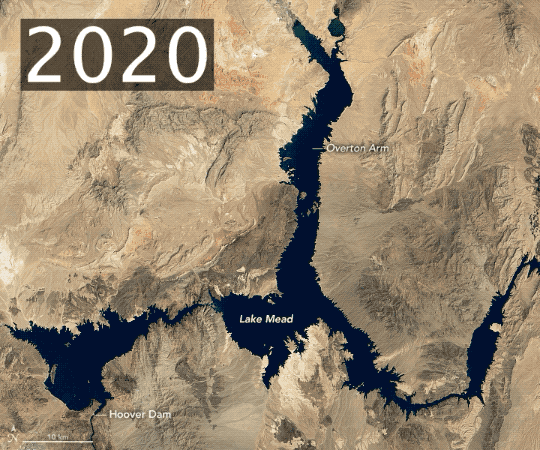
Sea Levels Continue to Rise
Melting ice raises sea levels around the world, as meltwater drains into the ocean. In addition, heat causes the ocean water to expand. From 1993 to today, global mean sea level has been rising around 3.4 millimeters per year. In 2021, sea level data from the recently launched NASA/ESA Sentinel-6 Michael Freilich mission became available to the public.

There is Hope
“This is not good news, but the fact that we are able to track this in real time and understand why it’s changing, and get people to notice why it’s changing and how we can change things to change the next trajectory, that gives me hope. Because we’re not in the dark here. We’re not the dinosaurs who are unaware the comet is coming. We can see the comet coming, and we can act.” – Dr. Gavin Schmidt, director of NASA GISS, where the global temperature record is calculated
Make sure to follow us on Tumblr for your regular dose of space!
5K notes
·
View notes
Text
Inside a Coronavirus Aerosol
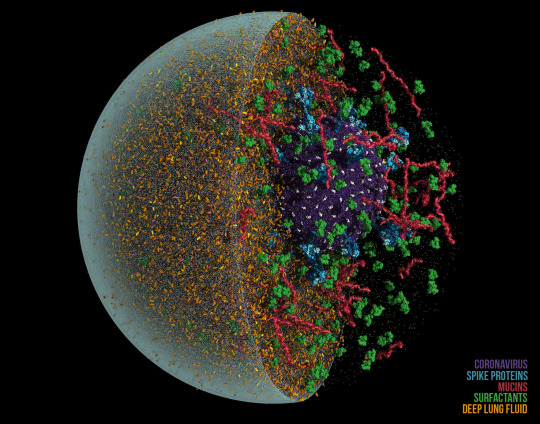
This is a glimpse inside a tiny aerosol droplet with a single SARS-CoV-2 coronavirus inside it. The numerical simulation required a team of 50 scientists, 1.3 billion atoms, and the second most powerful supercomputer in the world. (Image and research credit: R. Amaro et al.; via NYTimes; submitted by Kam-Yung Soh) Read the full article
422 notes
·
View notes
Text
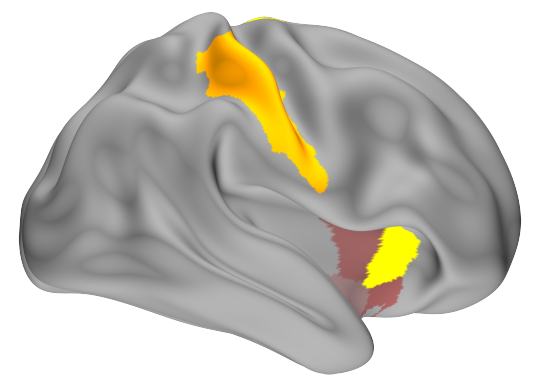
Study shows how taking short breaks may help our brains learn new skills
In a study of healthy volunteers, National Institutes of Health researchers have mapped out the brain activity that flows when we learn a new skill, such as playing a new song on the piano, and discovered why taking short breaks from practice is a key to learning. The researchers found that during rest the volunteers’ brains rapidly and repeatedly replayed faster versions of the activity seen while they practiced typing a code. The more a volunteer replayed the activity the better they performed during subsequent practice sessions, suggesting rest strengthened memories.
“Our results support the idea that wakeful rest plays just as important a role as practice in learning a new skill. It appears to be the period when our brains compress and consolidate memories of what we just practiced,” said Leonardo G. Cohen, M.D., senior investigator at the NIH’s National Institute of Neurological Disorders and Stroke (NINDS) and the senior author of the study published in Cell Reports. “Understanding this role of neural replay may not only help shape how we learn new skills but also how we help patients recover skills lost after neurological injury like stroke.”
The study was conducted at the NIH Clinical Center. Dr. Cohen’s team used a highly sensitive scanning technique, called magnetoencephalography, to record the brain waves of 33 healthy, right-handed volunteers as they learned to type a five-digit test code with their left hands. The subjects sat in a chair and under the scanner’s long, cone-shaped cap. An experiment began when a subject was shown the code “41234” on a screen and asked to type it out as many times as possible for 10 seconds and then take a 10 second break. Subjects were asked to repeat this cycle of alternating practice and rest sessions a total of 35 times.
During the first few trials, the speed at which subjects correctly typed the code improved dramatically and then leveled off around the 11th cycle. In a previous study, led by former NIH postdoctoral fellow Marlene Bönstrup, M.D., Dr. Cohen’s team showed that most of these gains happened during short rests, and not when the subjects were typing. Moreover, the gains were greater than those made after a night’s sleep and were correlated with a decrease in the size of brain waves, called beta rhythms. In this new report, the researchers searched for something different in the subjects’ brain waves.
“We wanted to explore the mechanisms behind memory strengthening seen during wakeful rest. Several forms of memory appear to rely on the replaying of neural activity, so we decided to test this idea out for procedural skill learning,” said Ethan R. Buch, Ph.D., a staff scientist on Dr. Cohen’s team and leader of the study.
To do this, Leonardo Claudino, Ph.D., a former postdoctoral fellow in Dr. Cohen’s lab, helped Dr. Buch develop a computer program which allowed the team to decipher the brain wave activity associated with typing each number in the test code.
The program helped them discover that a much faster version – about 20 times faster - of the brain activity seen during typing was replayed during the rest periods. Over the course of the first eleven practice trials, these compressed versions of the activity were replayed many times - about 25 times - per rest period. This was two to three times more often than the activity seen during later rest periods or after the experiments had ended.
Interestingly, they found that the frequency of replay during rest predicted memory strengthening. In other words, the subjects whose brains replayed the typing activity more often showed greater jumps in performance after each trial than those who replayed it less often.
“During the early part of the learning curve we saw that wakeful rest replay was compressed in time, frequent, and a good predictor of variability in learning a new skill across individuals,” said Dr. Buch. “This suggests that during wakeful rest the brain binds together the memories required to learn a new skill.”
As expected, the team discovered that the replay activity often happened in the sensorimotor regions of the brain, which are responsible for controlling movements. However, they also saw activity in other brain regions, namely the hippocampus and entorhinal cortex.
“We were a bit surprised by these last results. Traditionally, it was thought that the hippocampus and entorhinal cortex may not play such a substantive role in procedural memory. In contrast, our results suggest that these regions are rapidly chattering with the sensorimotor cortex when learning these types of skills,” said Dr. Cohen. “Overall, our results support the idea that manipulating replay activity during waking rest may be a powerful tool that researchers can use to help individuals learn new skills faster and possibly facilitate rehabilitation from stroke.”
(Image credit: Courtesy of Cohen lab, NIH/NINDS)
152 notes
·
View notes
Text
Nikola Tesla Explaining How Guglielmo Marconi Copied His Wireless System
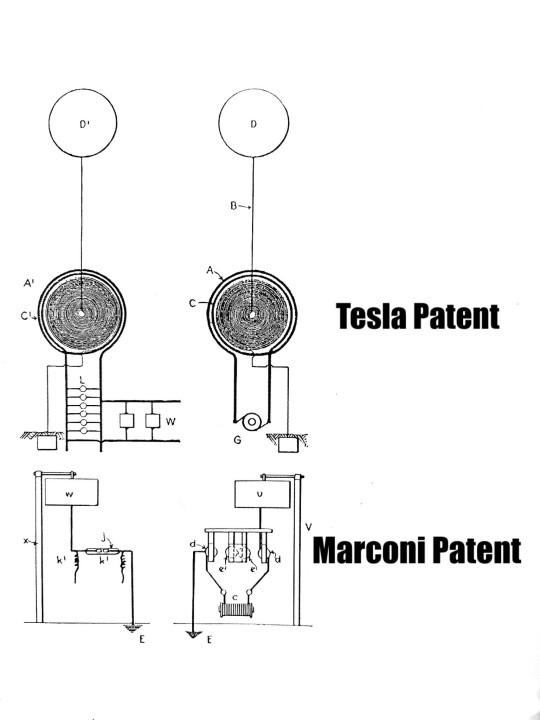
"Now, it is important to give you a clear idea of the differences between the apparatus I produced and the contemporary apparatus. I have selected just these diagrams to give you, in a few words, the exact differences between the system I have developed and the system illustrated below in this diagram, which is typical of the systems that had been used prior to my invention.
"This upper diagram is taken from my patents, and this lower drawing from a patent of Marconi which appeared in 1901. Certainly, it is proper to compare his arrangements with mine because they are used at the time when I brought out these principles.
"As you see, here in this figure on the right is my conductor connected to the ground and to the antenna, with absolutely no break in it. This other [in Marconi patent drawing] is a conductor connected to the antenna and the ground with a break in it. It cannot compare with mine because that break means resistance and diminution of the resonant rise. Furthermore, note the difference that I have here—the primary energy passing into a transformer—and that these two circuits are tuned. There is no primary or a transformer in this Marconi arrangement. It is a wasteful system to begin with.
"At the receiving end, as you see, I have again an antenna and a self-inductance in series with the ground and no break. He has a wire connected to the ground and to an antenna, a break or device of high, very high resistance with which it is absolutely impossible to obtain any practical results.
"My system is a system which can be perfectly attuned, and it will transmit to this antenna, here at the left, hundreds of thousands of times, millions of times, the energy which his device can transmit to his receiver.
"Furthermore, my system is a system which is exclusive, which can be tuned and rendered private; that of Marconi can not be tuned. Moreover, his transmitter generates electromagnetic waves a very high frequency, which are absorbed in the air and penetrate only a few miles, while mine produces current waves which pass to the opposite point of the glow with the greatest facility, and can affect instruments at any distance.
"If you take these two contemporaneous diagrams, and examine the subsequent developments, you will find that absolutely not a vestige of the apparatus of Marconi remains, and that in all the present systems there is nothing but my four-tuned circuits. Everybody is using them.
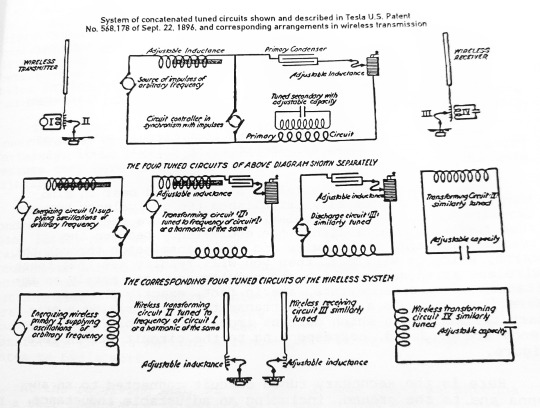
"Every wireless message that has ever been transmitted to any distance has been transmitted by this apparatus; there is no other way. Mr. Marconi came here when he announced that he had made a transmission across the Atlantic. I congratulated him. I said to my secretary, "I can not understand how Marconi could obtain these results. His apparatus cannot do this; he must use my apparatus." My secretary said, "How can Marconi use your apparatus when here is his statement that he had tried it and it did not work did not work?" But, when you examine the publications of a year later, you will note Marconi comes out with the statement that he had used these four circuits, and the only excuse that he has put up is that he did not know that these four circuits had to be attuned. That was his excuse. In the meantime, he had been using this apparatus. Every message that has ever been transmitted to any distance, by telegraph or telephone—wireless, has been by the use of these instrumentalities and no others."
(Nikola Tesla in a pre-hearing interview with his legal counsel in 1916 to protect his radio patents from Guglielmo Marconi. “Nikola Tesla On His Works With Alternating Currents and Their Application to Wireless Telegraphy, and Transmission of Power.” Twenty First Century Books, Breckenridge, Colorado, 2002.)
212 notes
·
View notes
Photo

World Environment Day!! At least, Think Today!! http://goo.gl/TPX636
0 notes